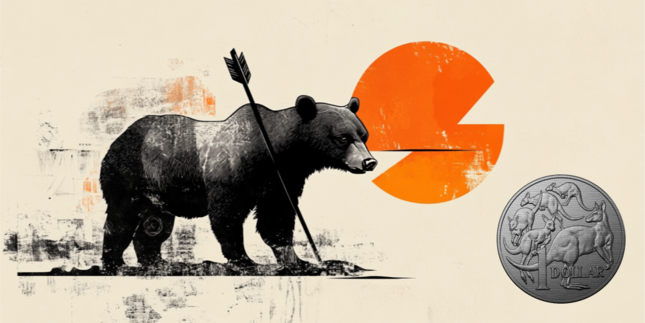Trump Calls on Saudi Crown Prince
How Big a Supply Cut?
Disbelief Prevails
Bloomberg reports Trump’s Push for Huge Deal to Cut Oil Supply Draws Disbelief
After the president’s social-media intervention on Thursday, oil traders are frantically assessing whether Saudi Arabia, Russia and possibly even the U.S. -- the world’s three biggest producers -- are poised to strike a once-unthinkable grand bargain to cut daily supplies in unison by 10 million to 15 million barrels.
It’s unclear whether it’s feasible -- or even legal -- for such a coalition to come together. Or indeed whether it would be enough to tame the tsunami of unwanted crude now bearing down on world markets, which could be two to three times bigger than the cut touted by Trump.
“The more people are at the table, the more difficult it is to get a deal,” said Pierre Andurand, whose Andurand Commodities Fund soared more than 140% last month through bearish bets on crude. “I find it difficult to believe that a deal like that could be agreed quickly.”
Details in Questions
Also consider Trump’s Disputed Claim of Saudi, Russia Oil Cuts Jolts Markets
Conflicting messages from the administration -- the president has said he likes low gas prices, while Secretary of State Michael Pompeo and others have urged the Saudis to cut production -- have undermined the U.S. government’s leverage, the person said, asking not to be identified because of the sensitivity of the matter.
Trump also said he had spoken to Saudi Prince Mohammed bin Salman, who had in turn spoken with Russian President Vladimir Putin. But a Kremlin spokesman, Dmitry Peskov, said the conversation hadn’t happened and that no production cut had been agreed with the Saudis.
Riyadh has until now made clear it’s ready to cut production provided that other big oil producers, including some that aren’t part of the OPEC+ group like the U.S., Canada and Brazil, also reduce their output. OPEC+ refers to a previous alliance between OPEC and Russia to set production levels.
The White House has considered tariffs on foreign oil imports to protect U.S. producers, though the idea is opposed by some top Trump advisers led by Larry Kudlow, the director of the National Economic Council, according to people familiar with the matter.
Negative Oil Prices
For some grades of crude, Negative Prices Are Already Here
The collapse in appetite for gasoline, jet fuel and diesel has been unprecedented in speed and scale. Goldman Sachs Group Inc. estimated Monday that with economies representing 92% of global gross domestic product now under some form of social distancing, the loss of demand this week stands at 26 million barrels per day, roughly a quarter below last year’s levels. Over a month, that’s almost 800 million barrels lost. Numbers since published from the shuttered economies of Italy and Spain suggest levels of destruction could be even worse. Spanish diesel demand is down 61%. The collapse is translating into a surplus that’s straining refineries, pipelines and the world’s limited ability to squirrel away oil.
For landlocked drillers, though, there are greater worries. They are facing a lack of local storage, and pipeline companies asking them to cut back or prove they have a buyer for their crude before loading. This all means that negative oil prices — when producers are effectively paying customers to take the oil — aren’t only possible, but already a reality.
Wyoming Asphalt Sour, used in paving, was among the first to slide into the red at a negative $0.19 per barrel in mid-March, as my colleagues Javier Blas and Sheela Tobben reported last month.
Texas Weighs Curtailing Oil Production for First Time in Decades
The Wall Street Journal reports Texas Weighs Curtailing Oil Production for First Time in Decades
Texas, which hasn’t limited production since the 1970s, was a model for the Organization of the Petroleum Exporting Countries, which has sought to control world-wide oil prices in recent decades. OPEC and Russia were unable to reach a deal on reducing output in response to the coronavirus pandemic, which helped trigger the current collapse in prices.
It is unclear whether regulators will ultimately act to curtail production, but staffers are examining what would be required in such an event, the people said.
The Permian Basin, which straddles Texas and New Mexico, is America’s most productive oil field and the center of the revival in American output resulting from shale drilling, which has helped boost U.S. output to roughly 13 million barrels a day, the most in the world.
Best Option - Do Nothing
Trump trots out tariffs but he also wants low prices.
Artificially jacking up the cost of crude which implies jet fuel hardly seems like the right thing to do.
Saudi is willing to cut production as long as Russia, Mexico, Canada and the US do as well. Good luck with that.
The best option is to not get involved.
Demand Rules
This is a demand issue. For another month global demand will be in the gutter.
Tweets cannot fix that.
The most important stat comes from Goldman Sachs: The loss of demand this week stands at 26 million barrels per day, roughly a quarter below last year’s levels.
It seems that even IF Saudi talked to Russia (as Trump claims and Russia denies), and the whole world agreed to take action, Trump's proposed 10-15 million barrel reduction will not stop the oil slide.
Do nothing and someone will blink as soon as storage capacity runs out.
This material is based upon information that Sitka Pacific Capital Management considers reliable and endeavors to keep current, Sitka Pacific Capital Management does not assure that this material is accurate, current or complete, and it should not be relied upon as such.
Recommended Content
Editors’ Picks

AUD/USD keeps the red after RBA meeting minutes, Aussie Retail Sales
AUD/USD retains its negative bias following the release of dovish RBA meeting minutes, which showed that policymakers placed weight on downside risks to the economy. This, along with the escalating US-China trade war, overshadows in-line Australian Retail Sales and does little to provide any impetus to the Aussie despite subdued USD price action.

USD/JPY weakens further after Trump threatened Japan over currency depreciation
USD/JPY drifts lower for the second straight day and moves closer to a multi-month low touched last week in reaction to Trump's threat to Japan regarding the weak JPY. Moreover, firming expectations that the BoJ will hike interest rates further and the risk-off impulse act as a tailwind for the safe-haven JPY.

Gold price consolidates below $2,900 mark amid tariff concerns
Gold price preserves the previous day's recovery gains from a three-week low amid concerns over Trump's tariff policies and global trade war fears. Moreover, geopolitical risks might continue to fuel safe-haven demand for the bullion.

Bitcoin drops under $90,000, are institutions truly long BTC?
Bitcoin (BTC) climbed to a high of $94,416 early on Monday before erasing newfound gains and dropping under $90,000 support.

Seven fundamentals for the week: Angst rises ahead of tariff deadline and full buildup to Nonfarm Payrolls Premium
A reality show in the White House – the world is still digesting the dressing down of Ukraine's President Volodymyr Zelenskyy in the White House, but markets have to focus on other actions of US President Donald Trump: tariffs. The dramas come in a week of top-tier data. It is time to fasten your seatbelts.

The Best brokers to trade EUR/USD
SPONSORED Discover the top brokers for trading EUR/USD in 2025. Our list features brokers with competitive spreads, fast execution, and powerful platforms. Whether you're a beginner or an expert, find the right partner to navigate the dynamic Forex market.
